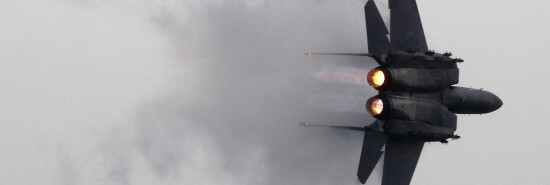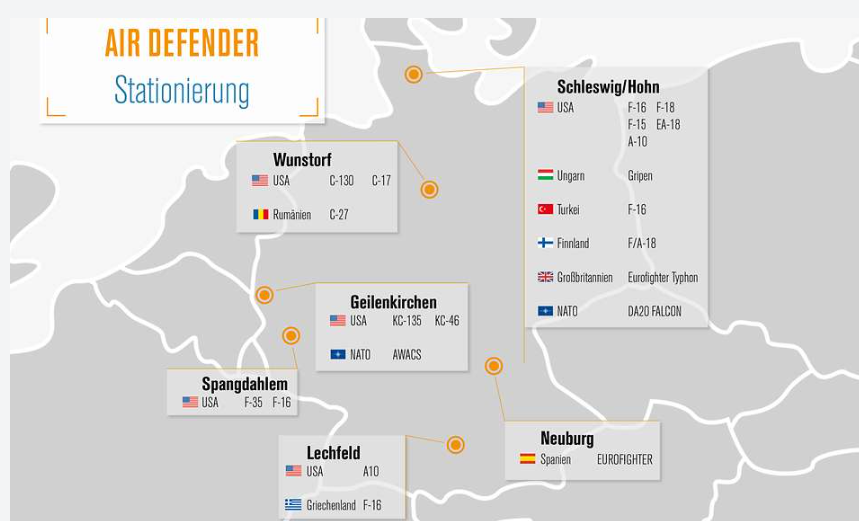
Air Defender 23 doesn’t show NATO’s strength but rather its US dependency
Tom Rogan
Video Embed
NATO remains a critical alliance for U.S. national interests and for the defense of democratic sovereignty. Russia’s brutal war on Ukraine proves that European defense alliances still matter. That said, NATO suffers a sustaining malady. Even as the United States must urgently prioritize its military resources in preparation for a conflict with China, most NATO members continue to rely on the U.S. to do the heavy lifting in Europe’s defense.
Take NATO’s “Air Defender 23” exercise, which will run from this coming Monday to June 23. It will simulate NATO’s military response to a Russian (if not explicitly Russian) seizure of eastern Germany and advance toward the Baltic Sea. Hosted by the German Air Force, the exercise will include approximately 10,000 personnel from 25 NATO member states. Germany noted that out of the 250 aircraft to be involved, “100 of these aircraft alone come from [the U.S.].” Asked by the Washington Examiner for the specific numbers of personnel and aircraft involved from each nation, a German Air Force spokesperson responded, “We cannot provide the detailed information you requested due to complexity as well as security reasons.”
WILDFIRE SMOKE MAP: TRACK MASSIVE HAZE IN REAL TIME ACROSS THE US
Beware security excuses being used to conceal impolitic facts. In this case, the fact is that once again it is the U.S. military that is carrying the load. Consider the German Air Force infographic below, which shows which aircraft are operating in the exercise and from which bases.

That infographic tells the tale. It shows that the U.S. is the only nation providing electronic warfare, refueling, dedicated air-to-ground, and fifth-generation aircraft. It shows the U.S. is also deploying Navy and Air Force aircraft. It shows that for all his rhetoric on European solidarity and the need for “strategic autonomy,” French President Emmanuel Macron is only sending one or more surveillance aircraft and perhaps a radar warning aircraft to help defend Germany from this hypothetical attack.
That the U.S. is providing all these assets is problematic. These aircraft are expensive to operate, maintain, and deploy. They have lifespans diminished by usage. This doesn’t mean that the U.S. shouldn’t participate in this exercise. On the contrary, it should do so to remind Russia that NATO remains resolute. But this infographic also shows that NATO continues to freeload off America’s defense investment and capability. This is something we see every day in terms of the war in Ukraine. Radar tracking shows that it is predominantly American refueler and transport aircraft that are doing the challenging and financially expensive work of securing NATO flanks. The Europeans simply don’t have enough of these aircraft and don’t want to use the ones they have for cost reasons.
There are some exceptions. Britain, Greece, Poland, and the Baltic States all spend at least 2% of GDP on defense. Indeed, NATO figures show that Greece spent 3.54% of its GDP on defense in 2022, more even than the U.S. (3.46% of its GDP). These nations also deploy their military forces in a forward posture that supports NATO deterrence. Unfortunately, many others do not.
Take the five largest European Union economies. France has only just approved necessary defense spending hikes after years of neglect. Germany’s so-called “Zeitenwende” pledge to boost defense spending massively exists only as hot air. Berlin spent 1.49% of its GDP on defense in 2022. Similarly, Italy spent 1.51% of its GDP, and Spain 1.09% of its GDP in 2022. Belgium, which, absurdly, is still allowed to host NATO, spent just 1.18% of its GDP on defense in 2022. Making matters worse, both Germany and Belgium allocated next to nothing for defense equipment.
This underlines the central strategic problem: America cannot keep doing most of everything, everywhere.
Vis a vis a war with the U.S. over Taiwan, China’s People’s Liberation Army has growing advantages in force scale, key advantages in geography, and rising parity or superiority with the U.S. military in force capability. Chinese President Xi Jinping has told his military to be ready to conquer Taiwan by 2030, and President Joe Biden has said four times now that he would order military intervention against such an effort.
Top line: The U.S. needs more of its warships, jets, and refuelers in the Pacific. If they truly value their alliance commitments, European NATO states must urgently step up. If not, a future American president may decide that hard and unfortunate choices are necessary.
